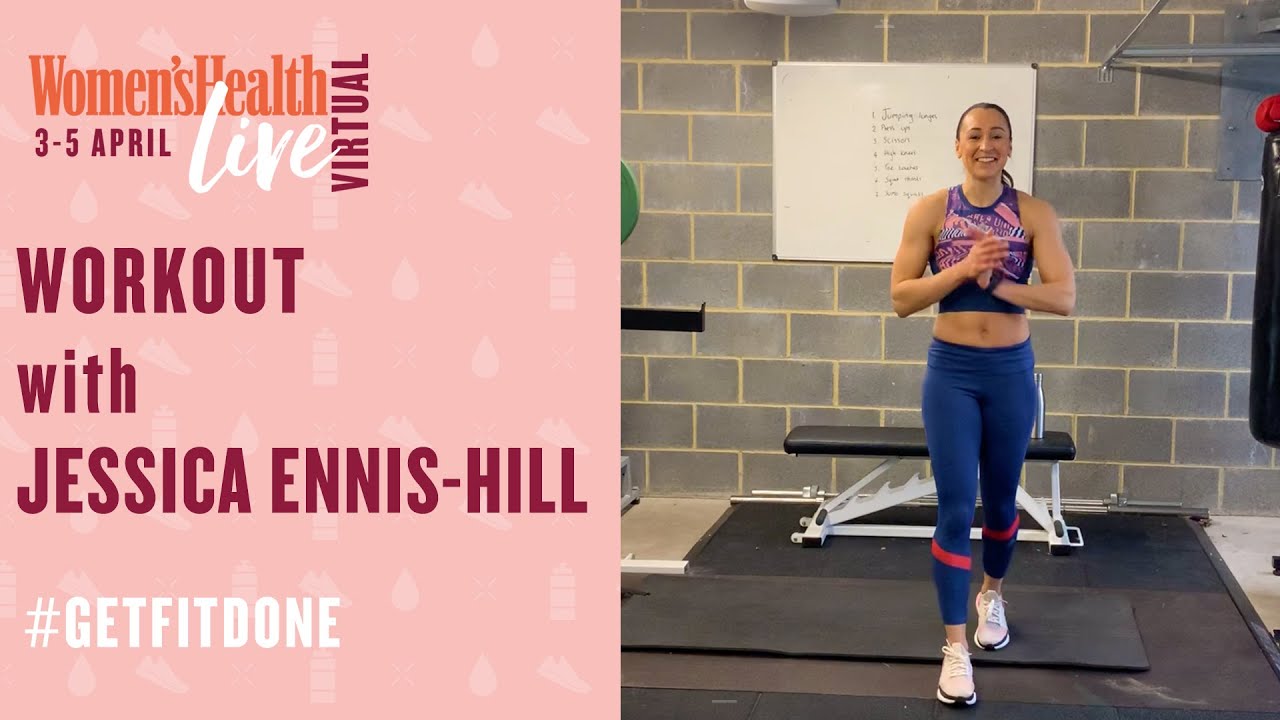
Even though we know the benefits of exercise, many people don't feel motivated to do it. It can be difficult to fit exercise into a busy schedule, but you can make an appointment with yourself for a certain time each day. To motivate yourself, set an alarm for a few moments before you start your workout. If you're not motivated, you may have an excuse for skipping the workout. Maybe you'd like to meet up with coworkers at happy hour or to have a glass to help ease your stress. You may meet up with friends for an after-work drink, even if your commitment to exercising is not there.
Try setting your alarm for later in a day if it isn't something you do every morning. This will prevent you from sleeping through the night. Try a video that starts at the beginning of the day if your schedule is not conducive to getting up in the morning. Set a time each day that you can exercise. Then, take a few minutes to watch it and try to figure out why you're lacking in motivation.

You may also want to consider listening to your favorite music while you're working out. You can choose a song or an audiobook to make the workouts more enjoyable. You can listen to podcasts and audiobooks on tape if you have trouble listening to music while working out. Consider creating a playlist to help you motivate yourself as you exercise. It can even motivate you to exercise for longer.
Another way to increase workout motivation is to set goals. You can set a time and date to reach your goals. It can become overwhelming to have too many goals. Set one or two goals to get the most out your workouts. You can also set a goal for a particular size or time period. You can track your progress easily if time is available. You should be focused on the results.
There are many ways you can stay motivated when working out. It is a great way of motivating yourself to work out by rewarding yourself with small victories at the end. It can be motivating to see a change in your muscle after a few weeks. A bad week can make it difficult to get motivated to exercise the next morning. But by focusing on the progress you make, you will feel better about yourself in general.

You can also start working out even if you don't feel like it. If you have a plan to get there, it's possible. If you are not motivated, it can be difficult to stay motivated. It is important to make it a regular habit. It should be part or your daily routine. It can lead to injury or burnout if you aren't doing it consistently. Do your best to stick with your new workout routine.
FAQ
What are the 7 best tips to lead a healthy, happy life?
-
You should eat right
-
Exercise regularly
-
Good sleep
-
Make sure to drink plenty of water.
-
Get enough rest
-
Be happy
-
Smile often.
Exercise: Good for immunity or not?
Exercise is good to your immune system. Your body makes white blood cells that fight infections when you exercise. Your body also gets rid of toxins. Exercise helps prevent diseases like cancer and heart disease. Exercise can help reduce stress.
Exercising too frequently can make your immune system weaker. Your muscles can become sore if you exercise too much. This causes inflammation and swelling. To fight infection, your body will produce more antibodies. Problem is, extra antibodies can trigger allergies and other autoimmune conditions.
So, don't overdo it!
How much should my body weight be for my height? BMI calculator & chart
The best way to determine how much weight you need to lose is to use a body mass index (BMI) calculator. The healthy BMI range for a healthy person is 18.5 to 24.9. Weight loss is possible if you aim to lose approximately 10 pounds per week. To calculate your BMI, simply enter your height and weight into the BMI calculator.
To see if you're overweight or obese, check out this BMI chart.
How do I count calories?
You might wonder, "What's the best diet for me?" or "is counting calories necessary?" Well, the answer depends on several factors including your current health status, your personal goals, your preferences, and your overall lifestyle.
The Best Diet For Me: Which One Is Right?
My current health status, personal goals, preferences, and overall lifestyle all play a role in choosing the right diet. There are many diets available, some good and others not so good. Some diets work well for some people and others do not. What should I do? How do I make the right decision?
These are the main questions addressed by this article. This article begins with a brief overview of the various types of diets that are available today. Then, the pros and cons of each type of diet are discussed. Finally, we'll discuss which one is best.
Let's start by taking a look at the various types of diets.
Diet Types
There are three main types. Low fat, high proteins, and ketogenic. Let's talk about them briefly.
Low Fat Diets
A low-fat diet is one that limits the intake of fats. This is achieved through reducing intakes of saturated fats (butter and cream cheese, for example). and replacing them with unsaturated fats (olive oil, avocados, etc.). A low fat diet is often recommended for those who want to lose weight quickly and easily. This diet can cause problems such constipation as heartburn, indigestion, and even stomach pain. Vitamin deficiencies can also occur if the person doesn't get enough vitamins through their diet.
High Protein Diets
High-protein diets limit carbohydrates and favor proteins. These diets often have higher levels of protein than most other diets. These diets are meant to increase muscle mass, and burn more calories. Unfortunately, they can't provide adequate nutrition for those who eat regularly. They can also be very restrictive so they may not be suitable for everyone.
Ketogenic Diets
Ketogenic diets can also be known as keto diets. They are high-fat and low in carbs and protein. They are commonly used by athletes and bodybuilders, as they allow them train harder and more frequently without getting tired. They do require strict compliance to avoid any side effects like fatigue, headaches, nausea, and headaches.
Does being cold give you a weak immune system?
Cold causes a decrease in immune system strength. This is because white blood cells are less effective at fighting infection. Being cold can make you feel more comfortable because your brain releases endorphins which help reduce pain.
What is the working principle of an antibiotic?
Antibiotics are medications that kill harmful bacteria. Antibiotics are used to treat bacterial infections. There are many options for antibiotics. Some are given orally, while some are injected. Other antibiotics are applied topically.
Many people who have been exposed can be prescribed antibiotics. If someone has chicken pox, they might need to take an oral antibiotic in order to prevent shingles. For those with strep-thorphritis, an injection of penicillin could be administered to prevent them from getting pneumonia.
Children should not be given antibiotics without the consent of a doctor. Children are at greater risk of developing side effects from antibiotics than adults.
The most common side effect of antibiotics is diarrhea. Other possible side effects include stomach cramps, nausea, vomiting, allergic reactions, headaches, dizziness, and rashes. These side effects usually disappear once treatment has ended.
These are 5 ways you can live a healthy and happy life.
Living a healthy lifestyle includes eating right, exercising regularly, getting enough sleep, managing stress, and having fun! You should avoid processed foods, sugar, or unhealthy fats. Exercise is good for your body and muscles. You can improve your memory and concentration by getting enough sleep. Stress management helps reduce anxiety and depression. And finally, having fun keeps us young and vibrant.
Statistics
- The Dietary Guidelines for Americans recommend keeping added sugar intake below 10% of your daily calorie intake, while the World Health Organization recommends slashing added sugars to 5% or less of your daily calories for optimal health (59Trusted (healthline.com)
- nutrients.[17]X Research sourceWhole grains to try include: 100% whole wheat pasta and bread, brown rice, whole grain oats, farro, millet, quinoa, and barley. (wikihow.com)
- WHO recommends consuming less than 5% of total energy intake for additional health benefits. (who.int)
- WHO recommends reducing saturated fats to less than 10% of total energy intake; reducing trans-fats to less than 1% of total energy intake; and replacing both saturated fats and trans-fats to unsaturated fats. (who.int)
External Links
How To
What does "vitamin" actually mean?
Vitamins can be described as organic compounds found in food. Vitamins are necessary for us to absorb nutrients in the foods we consume. Vitamins cannot be produced by the body. They must be acquired from food.
There are two types vitamins: water soluble or fat soluble. Water-soluble vitamins dissolve in water easily. These include vitamin C (thiamine), Vitamin B1 (riboflavin), Vitamin B2 (riboflavin), Vitamin B3 (niacin), Vitamin B6 (pyridoxine), Vitamin C, B1 (thiamine), Vitamin B2 (riboflavin), Vitamin B3 (niacin), and Vitamin B6 (pyridoxine). The liver and fatty tissues are home to fat-soluble vitamins. Examples include vitamin D, E, K, A, and beta carotene.
Vitamins can be classified according to biological activity. There are eight major categories of vitamins.
-
A - Vital for normal growth and maintaining good health.
-
C – essential for proper nerve function.
-
D – Essential for healthy teeth, bones and joints
-
E is needed for good reproduction and vision.
-
K - required for healthy muscles and nerves.
-
P - Essential for strong bones and teeth.
-
Q - aids digestion, absorption and absorption iron
-
R - Red blood cells are made from red blood cells.
The recommended daily allowance for vitamins (RDA) varies based on gender, age, and physical conditions. The U.S. Food and Drug Administration (FDA) sets the RDA values.
For adults 19 years and over, the RDA of vitamin A is 400mg per day. Pregnant mothers need 600 micrograms per days because it is vital for the development and growth of their baby. Children ages 1-8 require 900 micrograms per day. For infants younger than one year, 700 micrograms are required daily. However, this number drops to 500 micrograms each day for children aged 9-12 months.
Children aged 1-18 years need 800 micrograms daily, while children overweight require 1000 micrograms per days. Children who are severely obese or underweight will need 1200 micrograms each day.
Children 4-8 years old who have anemia must consume 2200 micrograms of Vitamin C daily.
2000 micrograms are required daily for good health in adults over 50. Because of their higher nutrient needs, women who are pregnant or nursing need 3000 mg per day.
Adults over 70 years of age need 1500 micrograms per day since they lose about 10% of their muscle mass each decade.
Women who are pregnant, nursing or breastfeeding need more than the RDA. Pregnant woman need 4000 micrograms daily in pregnancy, and 2500 per day after childbirth. Breastfeeding mothers need to consume 5000 micrograms every day when breastmilk has been produced.